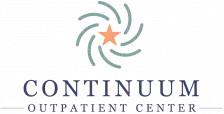Opioid Addiction Partial Hospitalization
What is Opioid Addiction Partial Hospitalization?
Opioid addiction partial hospitalization programs (PHP) are a specialized form of treatment for people struggling with opioid addiction or opioid use disorder (OUD). It provides an intensive structured therapeutic environment and offers a middle ground between inpatient and outpatient care.1

Opioid Addiction Partial Hospitalization vs. Other Treatment Options
Opioid Addiction Partial Hospitalization
A PHP is more intensive than traditional outpatient programs but less intensive than inpatient rehab. Patients often attend the program for several hours a day, up to five days a week.
- Group therapy
- Individual counseling
- Other therapeutic activities
Inpatient Rehab
This is the most intensive form of addiction treatment. Patients stay at the facility 24/7 for a set period, often 30, 60, or 90 days.
- Medical supervision
- Therapy
- Structured activities
Outpatient Programs
Outpatient programs are less intensive than partial hospitalization or inpatient rehab. Patients often attend sessions a few times a week for a few hours.
Treatment includes therapy and counseling but with less frequency and intensity. Patients live at home and can maintain work or school responsibilities.
Medication-Assisted Treatment (MAT)
MAT uses medications like methadone, buprenorphine, or naltrexone to manage withdrawal symptoms and cravings. Intensity can vary, and it’s used in inpatient, outpatient, and partial hospitalization settings.
MAT is often combined with counseling and behavioral therapies. It can also be part of any of the above treatment modalities.
Choosing a Treatment Program
- The person’s specific needs
- The severity of their addiction
- Other personal circumstances
Primary Advantages of Opioid Addiction Partial Hospitalization Programs
Intensive Treatment without Full Hospitalization
Structured Environment
Comprehensive Therapy
Opioid addiction partial hospitalization often includes a combination of individual therapy, group therapy, and educational sessions.
- Psychological issues
- Behavioral patterns
- Coping strategies
Support and Supervision
Transition and Step-Down Care
Skill Building and Education
- Coping strategies
- Stress management
- Life skills
Peer Support and Community
Flexibility
Family Involvement
Continuity of Care
Typical Structure of Opioid Addiction Partial Hospitalization Programs
Daily Schedule
Therapeutic Modalities
Individual therapy
Group Therapy
Family Therapy
Educational Sessions
- The nature of addiction
- The specific challenges of opioid addiction
- Strategies for maintaining sobriety
- Healthy living, such as nutrition, exercise, and sleep hygiene
Skill-Building Workshops
- Coping skills
- Stress management techniques
- Problem-solving abilities
Medication Management
As aforementioned, this includes the management and administration of medications such as methadone, buprenorphine, or naltrexone. These are used in medication-assisted treatment to manage withdrawal symptoms and cravings.
MAT should be utilized in conjunction with whole-person, traditional treatment methods, such as therapy or 12-Step programs. This also includes regular consultations with medical staff to monitor and adjust medication as needed.
Psychiatric Care
Psychiatric care includes assessment and treatment for co-occurring mental health disorders, which are common among people with substance use disorders. It provides ongoing psychiatric support to address issues like depression, anxiety, or PTSD.
Holistic Therapies
Some programs incorporate holistic approaches like yoga, meditation, acupuncture, or art therapy to support wellness and stress reduction.
Peer Support and Community Building
Relapse Prevention Planning
- Identifying triggers
- Creating coping strategies
- Establishing a support system
Aftercare and Follow-up
Aftercare and Opioid Addiction Partial Hospitalization Programs
Therapy and Support Groups
Relapse Prevention Plan
- Identifying personal triggers
- Developing coping strategies
- Establishing a supportive network of friends, family, and healthcare professionals
Lifestyle Recommendations
- Engaging in regular physical activity
- Maintaining a healthy diet
- Practicing stress-reduction techniques like meditation or yoga
Determining Eligibility for Opioid Addiction Partial Hospitalization Programs
Addiction Severity
The severity of a person’s opioid addiction is a primary consideration. This assessment often involves evaluating the extent of drug use. It includes the duration and frequency of opioid consumption and its impact on the person’s daily functioning.
Withdrawal Symptoms
Mental Health Status
Another crucial factor in determining eligibility is the person’s mental health status. Many people with opioid addiction also struggle with co-occurring mental health disorders, such as depression, anxiety, or PTSD.3
A thorough psychiatric evaluation is conducted to understand these complexities. It also ensures that the PHP can address both the addiction and any accompanying mental health issues.
Support System
Readiness for Treatment
Opioid Addiction Partial Hospitalization: A Multi-Faceted Approach
The integration of medical services, counseling, and behavioral therapies in opioid addiction partial hospitalization programs plays a critical role in addressing the multifaceted nature of opioid addiction.4
This integrative approach ensures comprehensive care, targeting not only the physical aspects of addiction but also its psychological and behavioral dimensions.
Some of the facets of care include:
Medical Services
Counseling and Behavioral Therapies
These are central to the treatment in a PHP. They address the psychological and emotional aspects of addiction. Counseling, whether individual or group-based, provides a space for patients to explore the underlying causes of their addiction, such as trauma or stress.
Behavioral therapies like cognitive behavioral therapy (CBT) help patients develop coping strategies to deal with triggers and cravings, improve problem-solving skills, and encourage behavioral changes that support sobriety.
The inclusion of family therapy can also be instrumental in repairing and strengthening family relationships. This is often a key component of the support system for people in recovery.
Role of Medication-Assisted Treatment
Importance of Integrated Approaches to Treatment

Opioid Addiction PHP at Continuum Outpatient Center
Our Approach
Contact Continuum Outpatient Center Today
Reach out to us today to learn more about how we can help you overcome opioid addiction. We’re here to help you heal.


